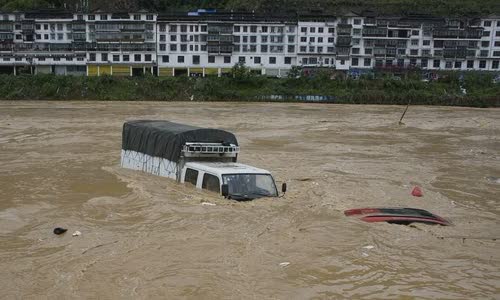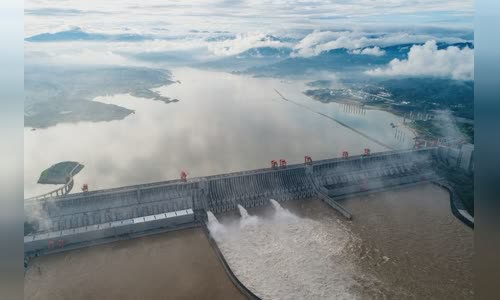Unauthorized land reclamation narrowed the mudflats and water reservoirs, making floods this year in China even more severe, according to Chinese experts.
Fan Xiao, a geologist at the Sichuan Geological and Geological Survey Department, said that decades of soil improvement and dam construction on the rivers in the Changjiang River basin have reduced the area and volume of Ba Duong Lake,

Flooded vehicles are flooded in Tong Giang district, Guizhou province, in early June Photo: SCMP
About 1,300 km of land was reclaimed there between 1954 and 1998, causing the surface of the lake to shrink from 5,160 km2 to 3,860 km2, according to research by David Shankman, a geologist at the University of Alabama, USA.
Zhang Wenbin, an environmentalist, said he had investigated illegal land reclamation activities at Thac Lam, another freshwater lake in Jiangxi province.
"There are many similar incidents," Zhang said, saying that Thac Lam lake has been narrowed in size, reducing its water capacity.
China is experiencing the worst floods in decades.
In some of the worst-hit areas, such as Jiangxi, dikes and houses were destroyed, reminding locals of a 1998 flood that left more than 3,000 people dead and 15 million homeless.
"We were on a higher ground so we did not expect such a serious flood, rushing water came, I had to drive to the packaging store," said Ping Ping, owner of a ceramic shop in Jingdezhen.
"Before, I only saw floods on television. That night, the floodwaters initially rose to my knees, then continued to rise," she said.
"Jingdezhen government has to think about this. We listen to flood warnings every year, so shopkeepers are usually experienced when to prepare what," she said, questioning why.
This is a modal window.
Beginning of dialog window.
End of dialog window.
In the summer, China often has floods, but illegal land reclamation and climate change have contributed to the heavier consequences and longer floods.

The Three Gorges Dam released floods on July 2 in Yichang City, Hubei Province Photo: Reuters.
"The subtropical high pressure system in the northwest Pacific is very strong this year," said Song Lianchung, director of the China National Meteorological Center.
Another reason is global warming, he added.
After the 1998 flood disaster, Beijing increased its budget for flood control projects.
"The Chinese budget invested in water infrastructure in the five years after 1998 was more than the total budget from 1949 to 1999," said Cheng Xiatao, an expert with the National Disaster Reduction Committee.
Cheng said many reservoirs were built on China's major rivers after 1998, including the huge Three Gorges Dam, which has a key role in "reducing flood pressure downstream the Changjiang River".
However, experts have questioned whether such huge dams can effectively control floods downstream and Tam Hiep, the world's largest dam built in 2006 to 'tame' the river.
Fan said that the dam could partially block the upstream flood, but had little effect on flood control in the middle and lower Truong Giang.
Peter Gleick, a hydrometer researcher and member of the American Academy of Sciences, said the Three Gorges dam drew a big lesson that no dam, no matter how large, could prevent flood disasters.
"What we have just learned is that man-made climate change increases the risk of extreme rains and floods, making dams like the Three Gorges unable to prevent future big floods,"
Liu Junyan, climate and energy campaigner of Greenpeace East Asia, said the intensity and frequency of extreme weather events were increasing, meaning that China should consider the factors.
"Planning and construction need to be considered to meet future climate risk response requirements," Liu said.



 Balsem Mosbah
Balsem Mosbah







